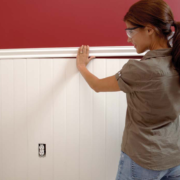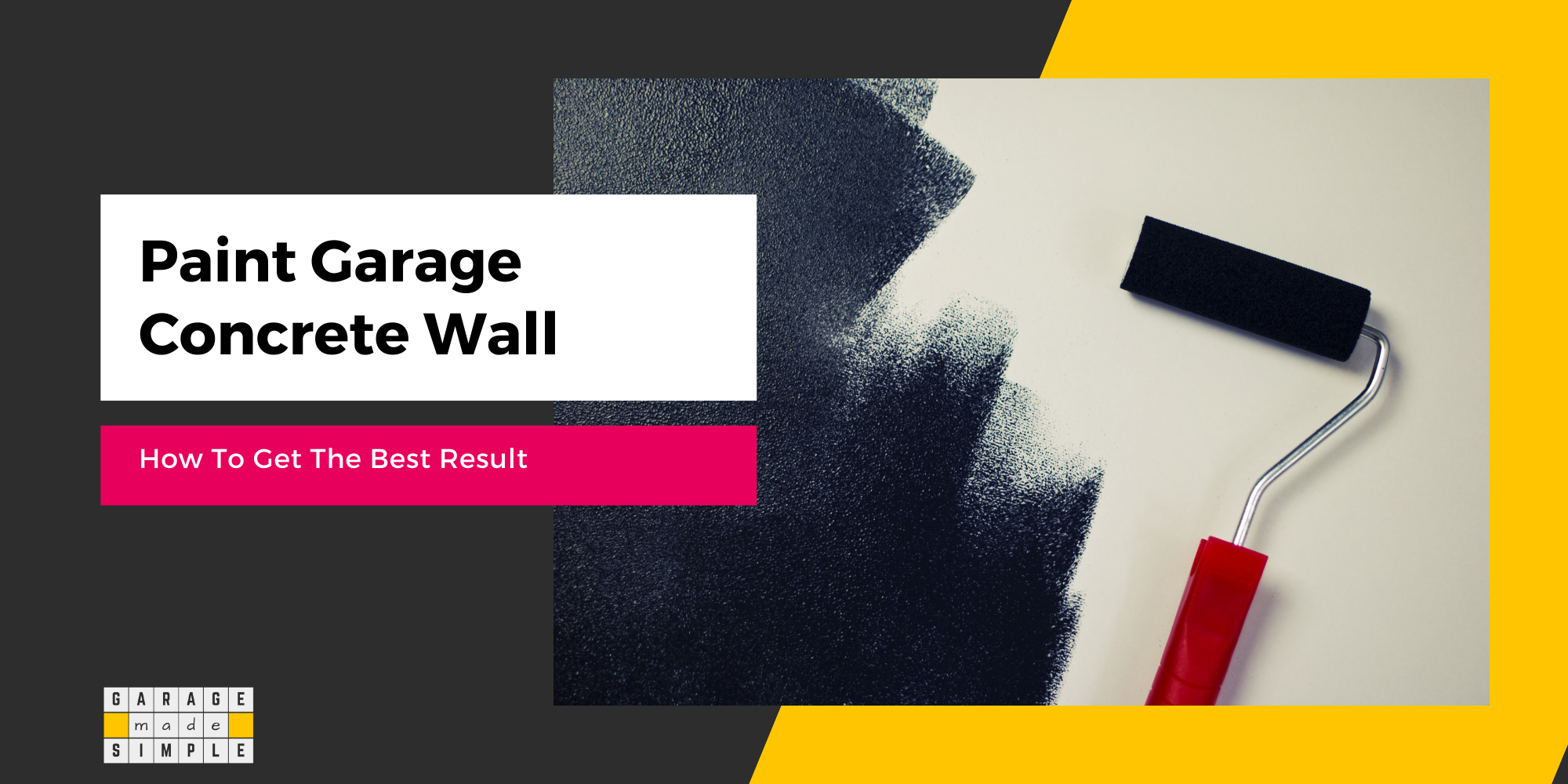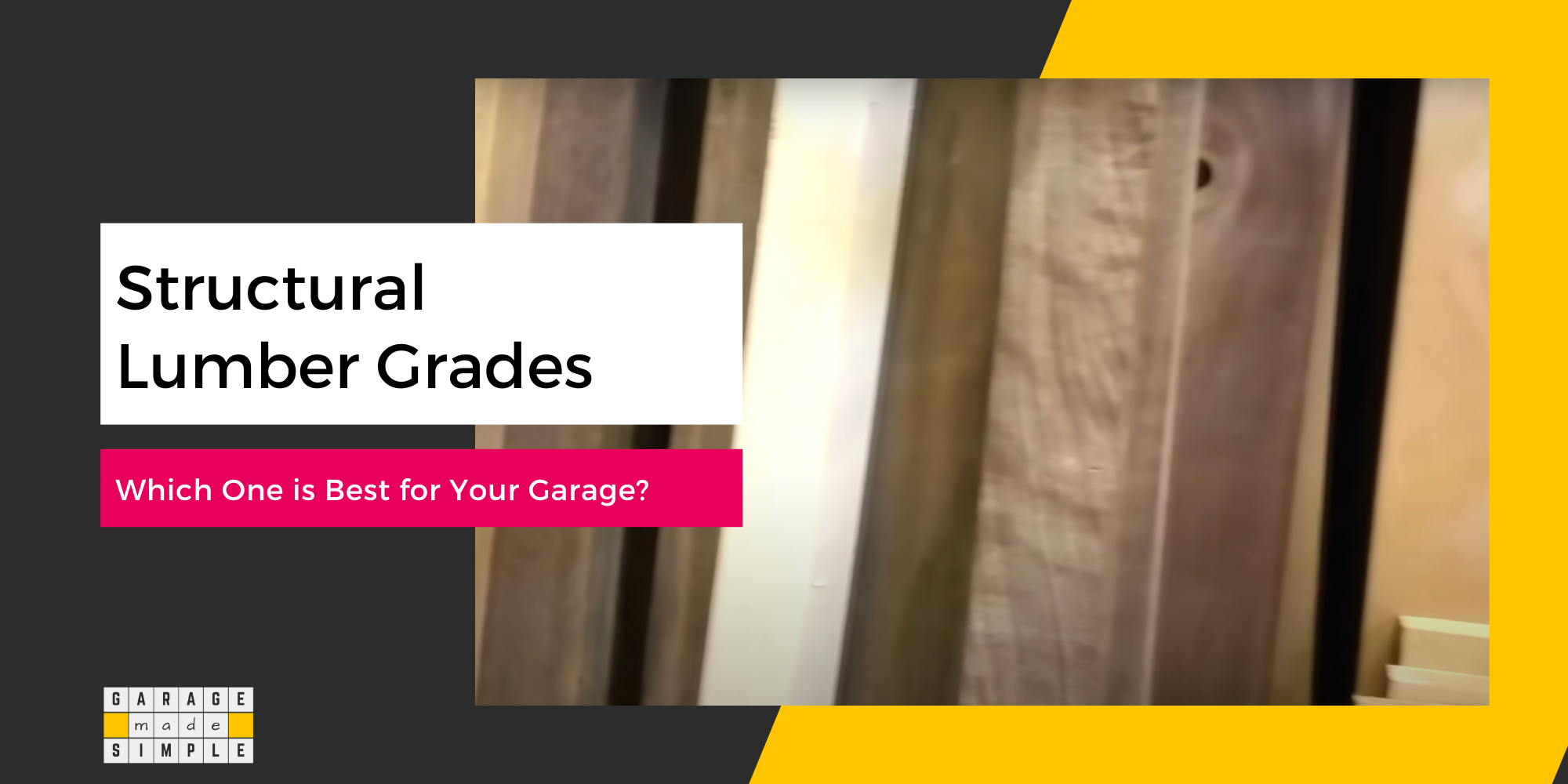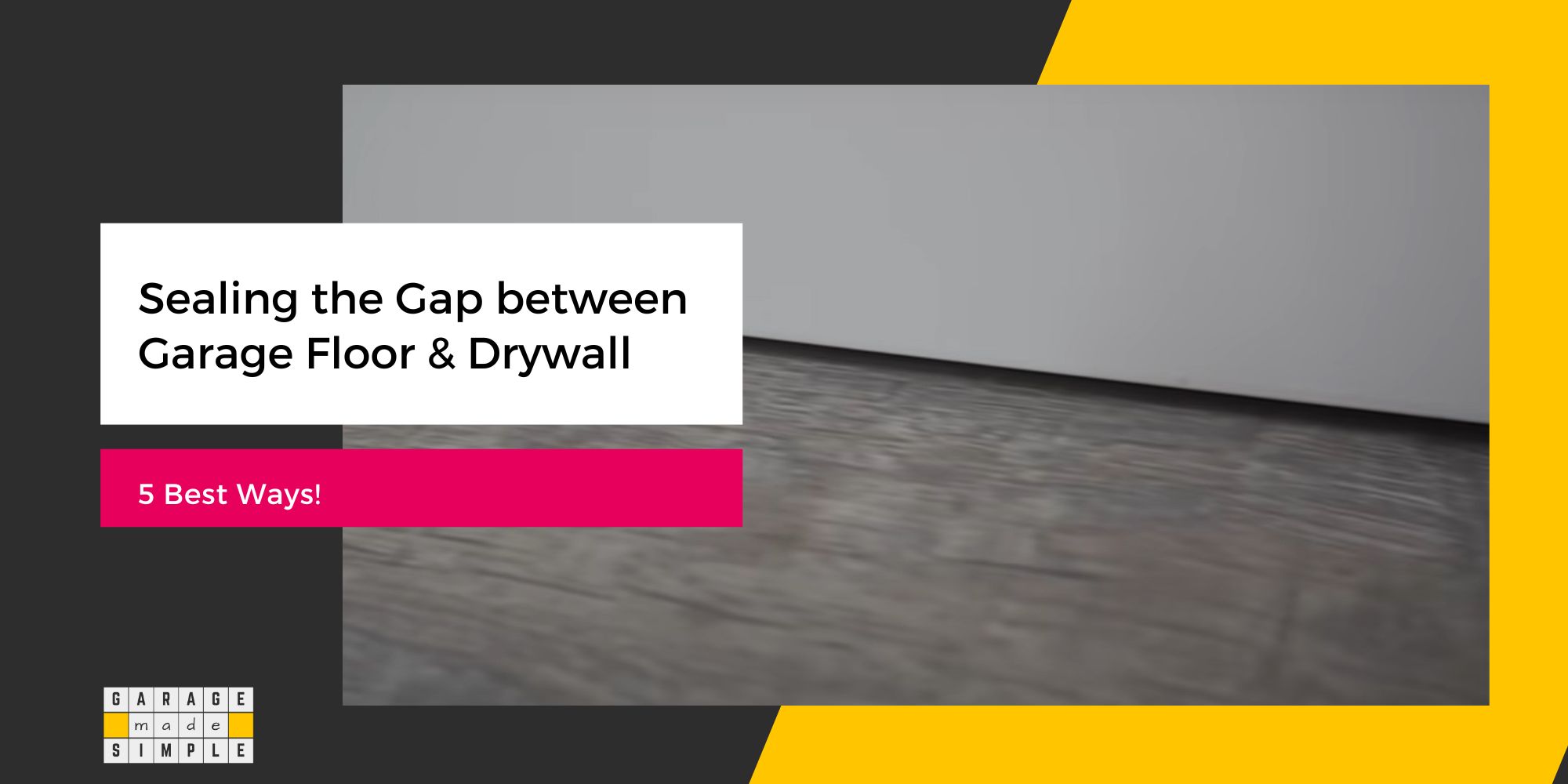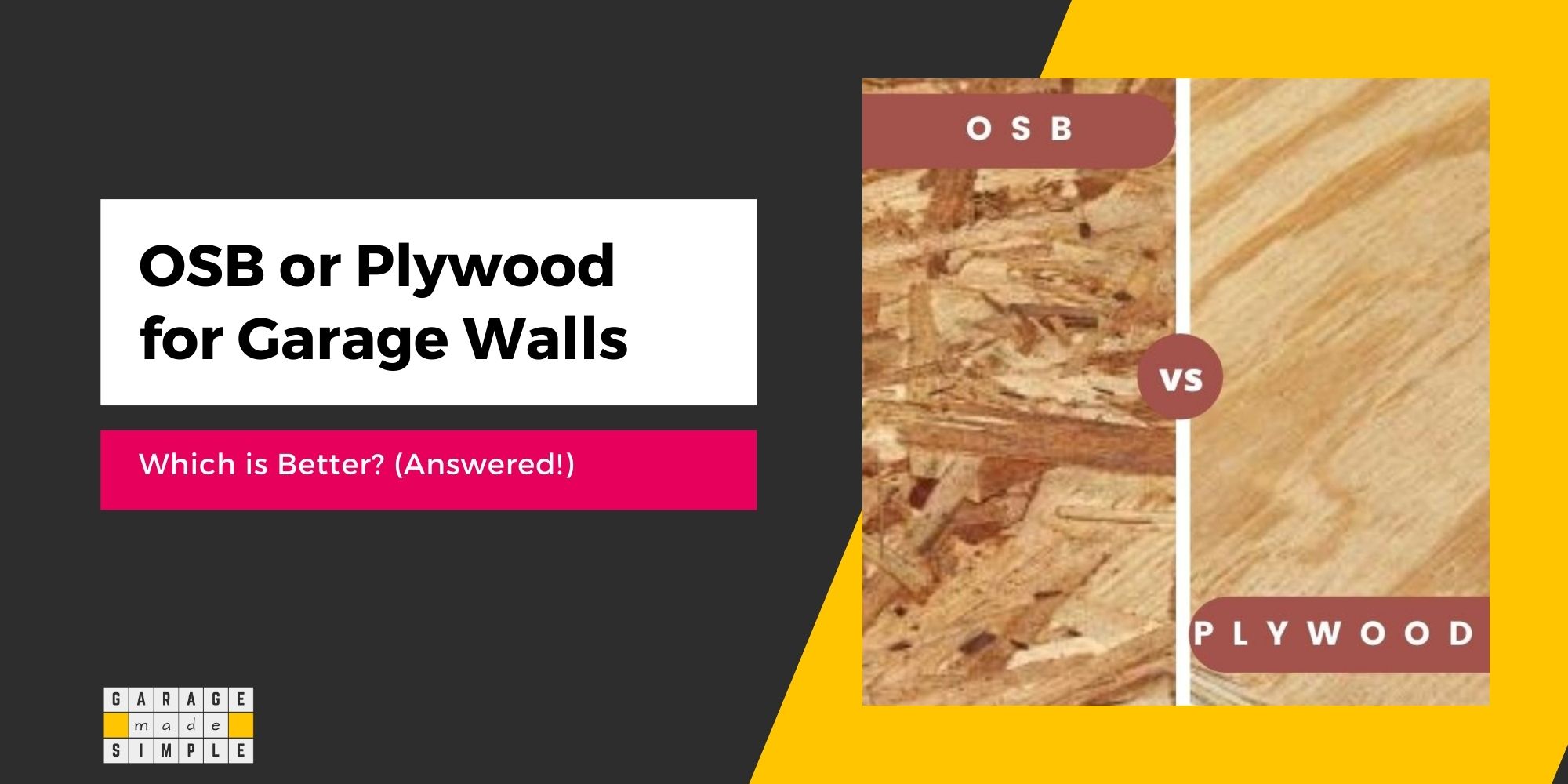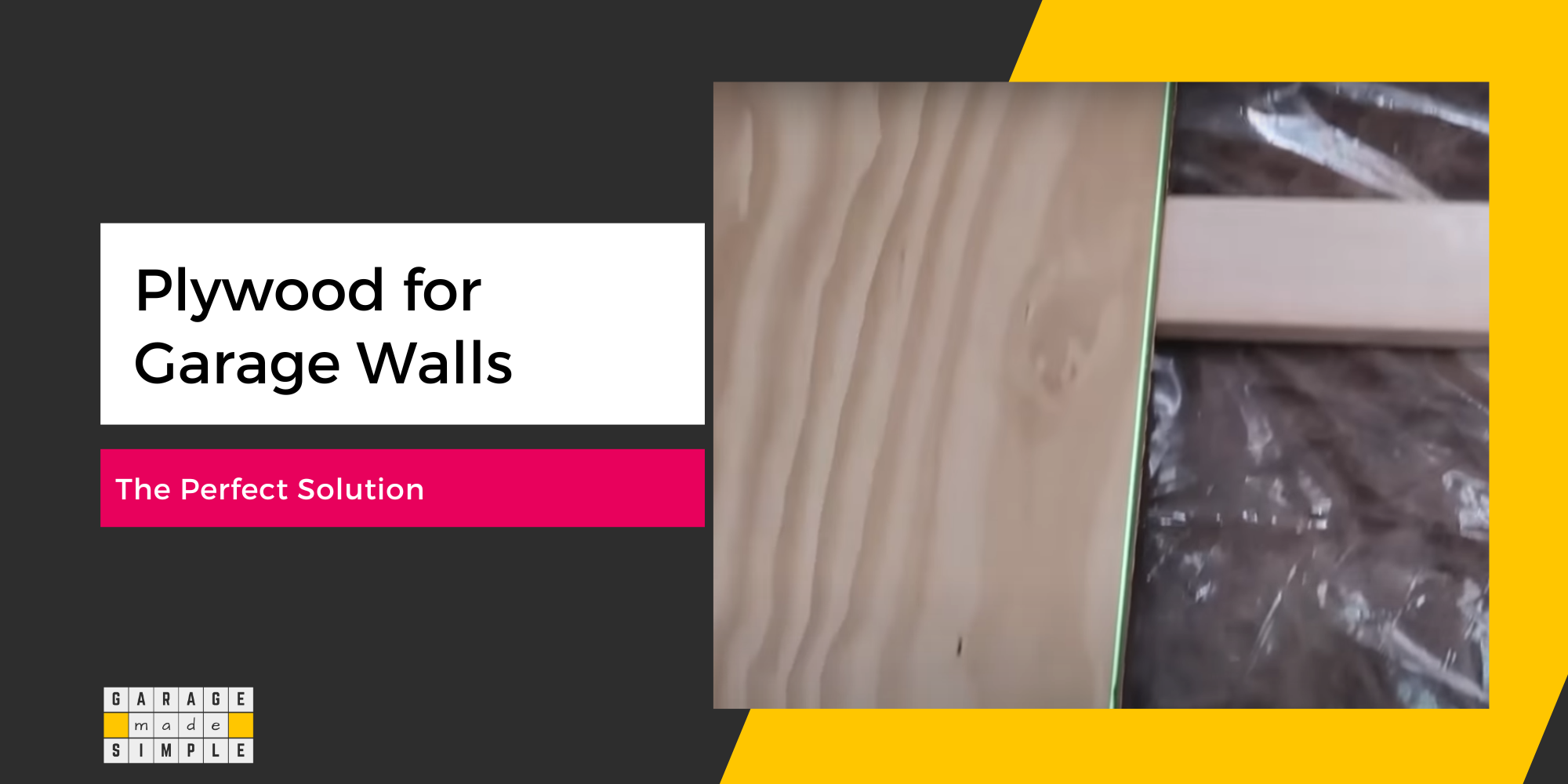Garage Wainscoting Panels (10 Important Things You Need To Know!)
garagemadesimple.com is a participant in the Amazon Services LLC Associates Program, an affiliate advertising program designed to provide a means for sites to earn advertising fees by advertising and linking to Amazon.com . The website is also an affiliate of a few other brands.
1. What is Wainscoting a Garage Wall?
Do you have a garage that is very boring? The interior walls are made up of drywall which you have painted some dull shade of gray. Well it might be time to spruce up those garage walls and protect them in the process too! But how? The answer is actually quite simple. Garage Wainscoting Panels!
There are quite a few important things that you need to know about Garage Wainscoting Panels and I am going to tell you just that in this post.
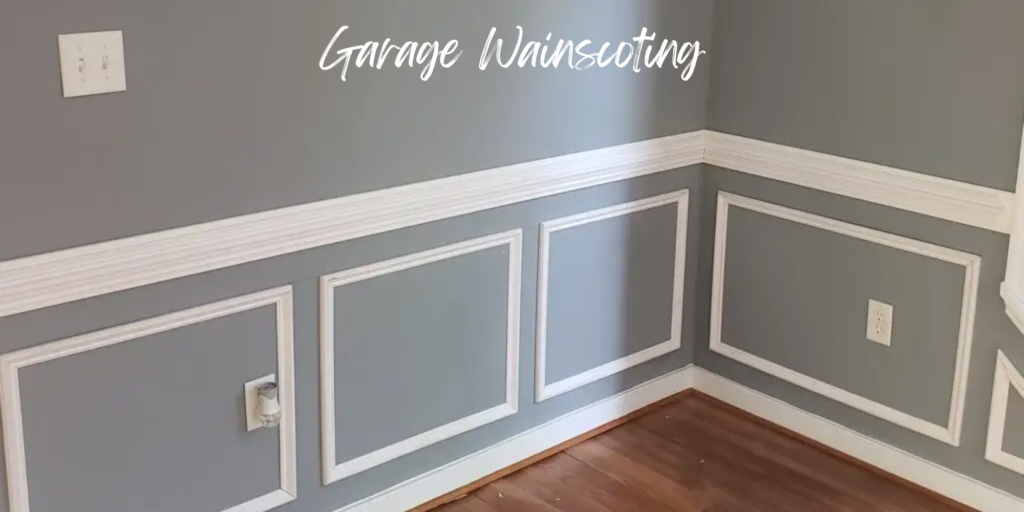
2. What does Wainscot mean?
You may or may not be aware of the term “wainscot”. If your home is built in the traditional style, then chances are that you may actually have some wainscoting in the entryway or other high traffic areas.
The Merriam-Webster Dictionary defines “wainscot” as
“the lower three or four feet (about one meter) of an interior wall when finished differently from the remainder of the wall”
The term can be used both as a noun or a verb.
In the earlier days, wainscot specifically meant “paneled wooden lining of an interior wall”. However, nowadays, wainscot can be any material. In essence wainscot is a covering, a panel or a lining attached to a wall.
3. What is the Difference between Paneling and Wainscoting?
In essence Wainscoting is Paneling. Rather, all wainscoting is paneling but all paneling need not be wainscoting.
If you were to use wood for covering the walls of a study, from floor to ceiling, then that would be wood paneling. You could even cover the ceiling with wooden strips or boards and that would also be wood paneling.
But none of the above would be wainscoting!
The important distinction is that wainscoting only covers the bottom part, usually 1/3rd of the height of the wall.
Wainscoting, therefore, visually breaks the wall into two distinct sections. Paneling, on the other hand, maintains the same visual look for the entire wall.
Paneling a wall, including a garage wall, is naturally a lot more expensive as a lot more material is required. Whereas, wainscoting is not only cheaper than paneling, it also adds a certain character to the garage (or the room, as the case maybe).
4. What is the Difference between Beadboard and Wainscot?
Now that you know the difference between paneling and wainscoting, you may wonder if there is any difference between a beadboard and a wainscot.
To be honest the difference is so minute that a lot of folks use beadboard and wainscot interchangeably.
In essence a beadboard is a wainscot. It is just that it is a special type of wainscot.
Since the very early days, a beadboard was created from narrow strips of wood that could form a panel board using tongue and groove. The strips of wood could slide together. There was no need to use any fasteners such as nails, screws or adhesive.
The beadboard is installed vertically resulting in a striped paneled look. Wainscot, on the other hand, could have just about any look, square panels, rectangular panels, diamond plate or just flat & flush.
So all beadboards are wainscots but all wainscots are not bead boards.
5. What is the Purpose of Wainscoting?
Wainscoting as an architectural feature has been around since the early 1800’s. It has really stood the test of time! In my opinion the reason is that wainscoting is a great example of the most basic design principle.
A wainscot is an excellent combination of form and function.
Protection
The key idea behind the use of wainscoting was to protect the interior walls of the house, particularly the areas which see high traffic, from scuff marks, nicks and dents.
Walls, especially the lower parts, often get hit when chairs or other pieces of furniture are moved around. No wonder wainscoting is an inevitable part of many public places such as bars & pubs, restaurants & dining halls.
Decoration
Wainscoting also adds a lot of character to a room and brings a certain definition to the walls by breaking it visually into two segments. The wainscot gives the walls a certain depth and brings relief by a change in the texture.
Prevention against Dampness
In earlier days, the concept of waterproofing foundations was not very well understood. Vapor barriers were non-existent.
So moisture from the ground would wick up the plastered walls making them damp. Damp walls were home to growth of mold & mildew
Wainscoting probably did not stop the wicking, but it certainly helped in covering up the eyesore of damp moldy walls.
Insulation
Damp lower walls also meant that the room would get pretty cold in winters and at night time. Wainscot, made of wood, worked as insulation. Wood as we all know is a pretty good insulator.
6. What are the Benefits of Garage Wainscoting Panels?
Of course the idea of wainscot did not germinate for use in a garage. There were no cars or car garages in those days. But looking at the benefits of wainscoting, it seems to be an ideal addition to a garage.
Here are the benefits of using garage wainscoting panels:
Protection from Impact:
Most garages use drywall as garage walls. Great as drywall is, it has very poor impact resistance. A garage wall, especially the lower section, is always at risk of being hit.
Misjudged the distance while parking? You have a hole in the drywall. Been a bit careless while storing the garden rake. A tear in the drywall.
Wainscoting can save your garage drywall from all these minor accidents.
Protection from Water:
Another weak point of a drywall garage wall is that drywall is hygroscopic. It absorbs water and the water wicks up.
It is not uncommon for garage floors to get flooded. Water diverters help. But snow melt from the car can still create water pools which can find their way to the drywall.
Garage Floor Trim provides some protection against water pooling. Unfortunately they are only a few inches in height.
What if the water pooling is more than a few inches deep? What when you are mopping the rainwater on the garage floor?
What when you are washing your car and water is splashing all over? You could use a Retractable Garage Divider. Or you could use garage wainscoting panels on the drywall.
Helps in Parking
Wainscoting a garage can be quite helpful as a parking aid when you are reversing in to your garage.
The visual break in the rear garage wall is a great aid when it comes to judging the distance in your rear view mirror.
Unique Beautiful Looks!
Garages can look really boring. In fact, too many have the same look.
Want your garage to stand out from that of your neighbor’s? Want to show off a bit?
Garage Wainscoting Panels may be the way to go!
7. What is Wainscot made of?
Another definition of “wainscot” by Merriam-Webster dictionary is “British : a fine grade of oak imported for woodwork”.
According to Macmillan Dictionary Blog
“In British interior design, wainscot panels were traditionally made from oak that was imported from Russia, Germany, or Holland.”
In the modern era, wainscot could be made of any material including wood, engineered wood (e.g. MDF), polymers (e.g. PVC) or metal (e.g. aluminum diamond plate).
If you are looking for a stunning macho look for your garage décor, take a look at the 3’x8′ Set of Anodized Blue, Black and Polished Diamond Plate Tiles from CarGuyGarage, which are designed for use as garage wainscot panels.
Looking for garage wainscoting panels that create a rustic farmhouse ambiance? Then you might like Allwood Beaded Knotty Pine Wainscot Kit, 24 Lineal Feet of Wall Length from Amazon.
- Solid Premium Nordic Knotty Pine Wainscot Kit is not a cheap plantation pine imitation
- The Classic Beaded Pattern with Tongue and Groove Edges may be stained or painted
8. Is Wainscoting Waterproof?
Really it all depends on the material of the wainscot. Wood wainscot is certainly not waterproof. It can be made moisture resistant using stains, varnish or paints. The same applies for other engineered wood panels such as plywood or MDF.
Wood & Engineered Wood
While wood and engineered wood garage wainscoting panels can provide some protection to the drywall in the garage, I do not recommend their use in a garage.
The only exception is if you are pretty sure your garage does not have a water problem and you really really need the wood look. It is difficult to argue against wood if you have a pub / bar in the garage!
PVC & Diamond Plate
If protecting the drywall on your garage wall from water splashes or pooling on the garage floor is your main concern then you need to go for PVC or Diamond Plate garage wainscoting panels.
Diamond Plate may be more your style, if you are a Ferrari or Harley Davidson kind of guy or gal. PVC is of course cheaper and will also give you a more traditional look. Both are waterproof!
POLYMAX WAINSCOT® Wall Panels are reversible tongue and groove planks that adhere over existing walls to give your garage a beautiful wall upgrade!
POLYMAX WAINSCOT panels are 100% waterproof, UV-mold/mildew resistant, paintable and stand up to spills, splashes and impacts!
They are quick and easy to install. Adhere using tube style adhesive and pair them with the matching base and chair rail for a complete system!
Where to buy? Visit https://parklandplastics.com/where-to-buy/
9. Does Wainscoting go over Drywall?
Yes, wainscoting goes over drywall.
There are 10 Reasons Why It Is Better To Drywall A Detached Garage. However, drywall has two major drawbacks.
- Low Impact Resistance
- Soaks in Water
This is why wainscoting a drywall garage wall is a really great idea. Garage wainscoting panels are impact resistant and can be waterproof.
10. What Sheen of Paint should I use for Wainscoting?
Not all wainscoting requires a coat of paint. Diamond Plate comes finished and does not need to be painted. New PVC wainscot also does not require any paint to begin with. It usually comes in white which goes well with almost every garage wall color.
If you have chosen to use a wood or engineered wood wainscot then a stain or varnish is a good choice as it can bring out the natural beauty of wood. If the wainscot is made of plywood, a latex paint in satin finish, would work well.
Zinsser Perma-White Mold and Mildew-Proof Interior Paint
Zinsser Perma-White Mold and Mildew-Proof Interior Paint (Satin)
- Mold & Mildew-Proof™* paint film- guaranteed for 5 years
- Washable, scrubbable, stain & moisture resistant finish
- Fade Resistant
- Water-base, low odor
- Tintable to off-white, pastel and medium colors
Even more than the sheen, the color of the wainscot would make a huge difference. The key is to have a contrast between the wainscot and the wall color so that the visual break is striking. So consider tinting the above to a color of your choice!
Try not to use more than two colors. One for the wainscot and another for the wall above. The only exception should be when the wainscot is made up of checkered tiles in two colors!
Thank you very much for reading the post. I do hope you found it informative and useful.



